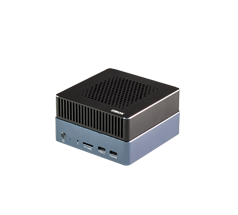USB Drive, TF Card, SSD Mounting¶
AIBOX-1688 supports a range of storage device interfaces (PCIE, SATA, USB, TF card).
When a storage device is inserted, it will be recognized as /dev/sdb1, /dev/nvme0n1p1, or /dev/mmcblkp1, similar to nodes in a desktop PC Linux environment.
The file system supports FAT, FAT32, EXT2/3/4, and NTFS. The AIBOX-1688 does not support automatic mounting, so manual mount is required. After completing data writing, please promptly use sync or umount operations. When shutting down, please use the sudo poweroff command to avoid a forced power-off, which may lead to data loss.
USB Drive (SATA Hard Drive) Mounting¶
Insert the USB drive (SATA hard drive) and use dmesg to find the corresponding sd device:
[15460.953423] [5] sdb: sdb1
Mount the USB drive (SATA hard drive):
# Create mount directory
mkdir disk
# Mount
sudo mount /dev/sdb1 disk
# View files in the USB drive (SATA hard drive)
ls disk
TF Card Mounting¶
Mounting the TF card is similar to the USB drive; use dmesg to find the corresponding mmcblk device:
[16220.776440] [4] mmcblk1: p1
Mount the TF card:
# Create mount directory
mkdir media
# Mount
sudo mount /dev/mmcblk1p1 media
# View files in the TF card
ls media
PCIE SSD Mounting¶
Generally, the mountable PCIE node is: /dev/nvme0n1p1.
Mount the PCIE SSD:
# Create mount directory
mkdir nvme_dir
# Mount
sudo mount /dev/nvme0n1p1 nvme_dir
# View files in the PCIE SSD
ls nvme_dir
